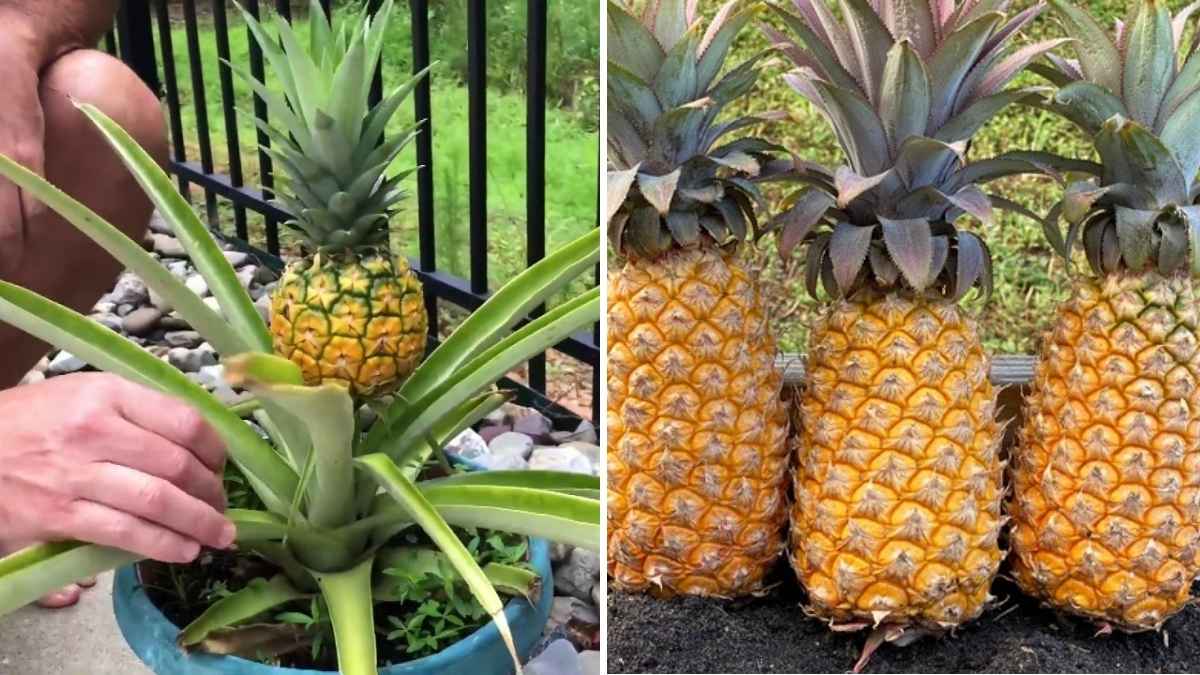Growing your own pineapple at home might sound difficult, but it’s actually easier than most people think. You don’t need a large garden or any special tools. All you need is a healthy pineapple, some patience, and a bit of care. Pineapples are tropical plants, but they can grow indoors or in pots in many climates with the right conditions.
This guide will walk you through every step, from choosing the right pineapple to harvesting your own sweet fruit at home.
Understanding How to Grow Your Own Pineapple
Before getting started, it’s good to know a bit about the pineapple plant. Pineapples are part of the bromeliad family and grow close to the ground. Each plant produces only one pineapple at a time, and it can take up to two years to get your first fruit. But once the plant matures, it can also produce baby plants called “suckers” or “pups” that grow into new pineapple plants.
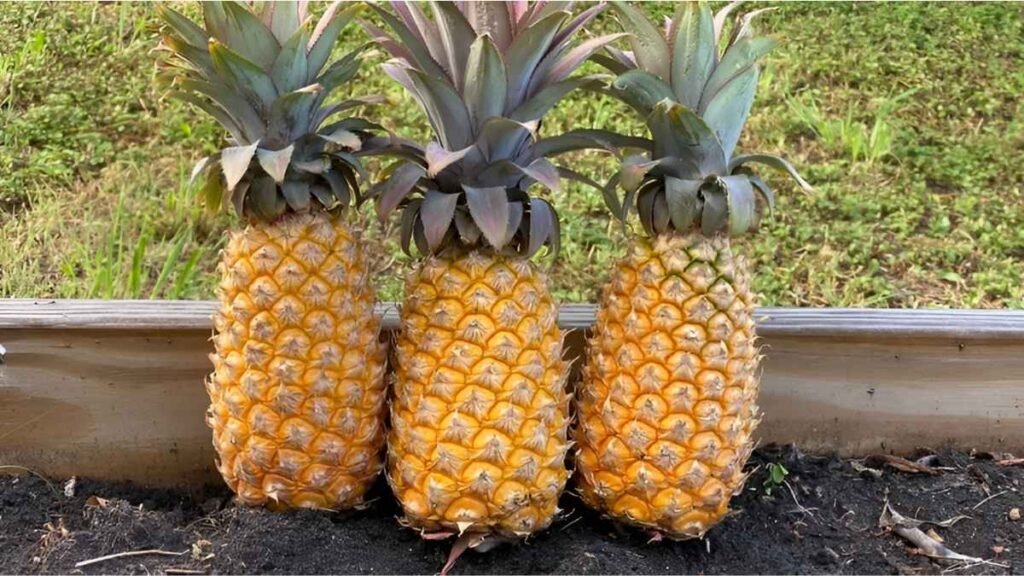
This process takes time, but it’s fun to watch your plant grow and eventually reward you with a juicy, homegrown pineapple.
Step 1: Choose a Healthy Pineapple
The first step is picking a good pineapple from the store. Look for a ripe fruit with green, healthy leaves. The skin should be golden but firm, and the fruit should smell sweet at the base. Avoid any pineapples that are bruised or have signs of rot.
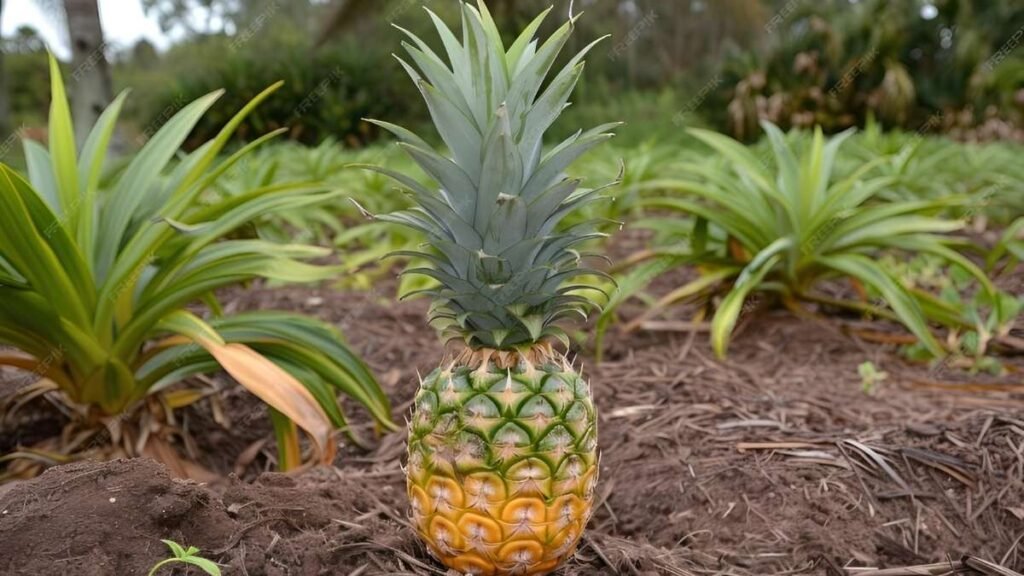
You’re not growing the fruit itself, but the leafy top also called the crown. So make sure the crown is fresh and green, not dry or brown.
Step 2: Remove the Crown
Hold the fruit firmly and twist the leafy top until it comes off. If twisting doesn’t work, you can cut off the crown about half an inch below the leaves. Carefully remove a few of the lower leaves to expose about an inch of the stem. This is where roots will grow.
Leave the crown to dry in a cool place for two or three days. This helps prevent rot when you plant it.
Step 3: Root the Pineapple Top
Once the crown has dried, it’s time to help it grow roots. There are two easy methods:
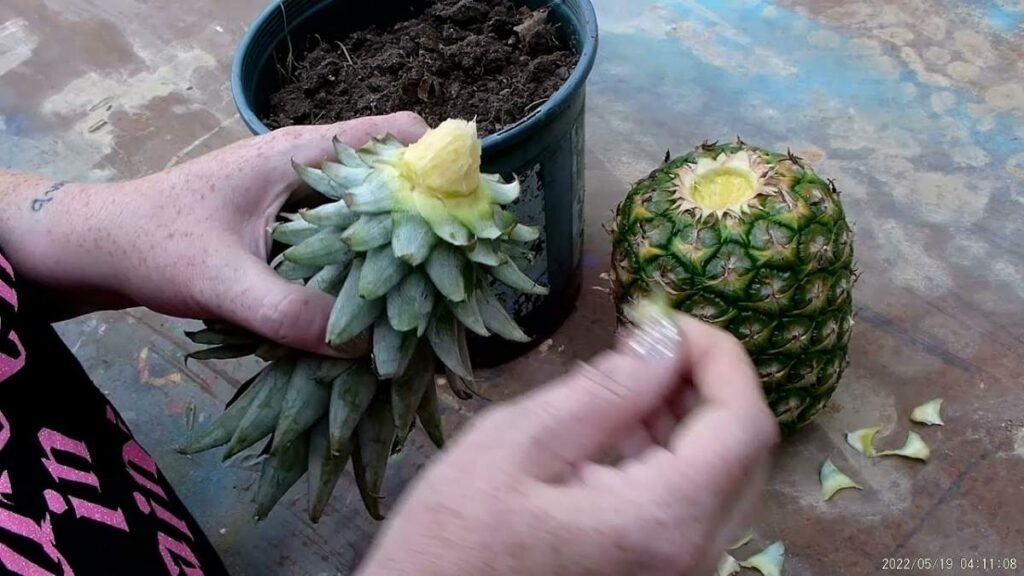
Water method: Place the bottom of the crown in a glass of water. Make sure only the stem is in the water, not the leaves. Place the glass near a sunny window and change the water every few days. Roots should appear in about two weeks.
Soil method: You can also plant the crown directly in a pot with well-draining soil. Water it lightly and keep the soil moist but not soaked.
Both methods work well, but many people find success starting with the water method and then transferring to soil once the roots are about two inches long.
Step 4: Planting in Soil
Once your pineapple top has grown roots, it’s time to plant it in a pot. Use a medium-sized pot with good drainage holes. Fill it with light, well-draining soil cactus or succulent mix works well.
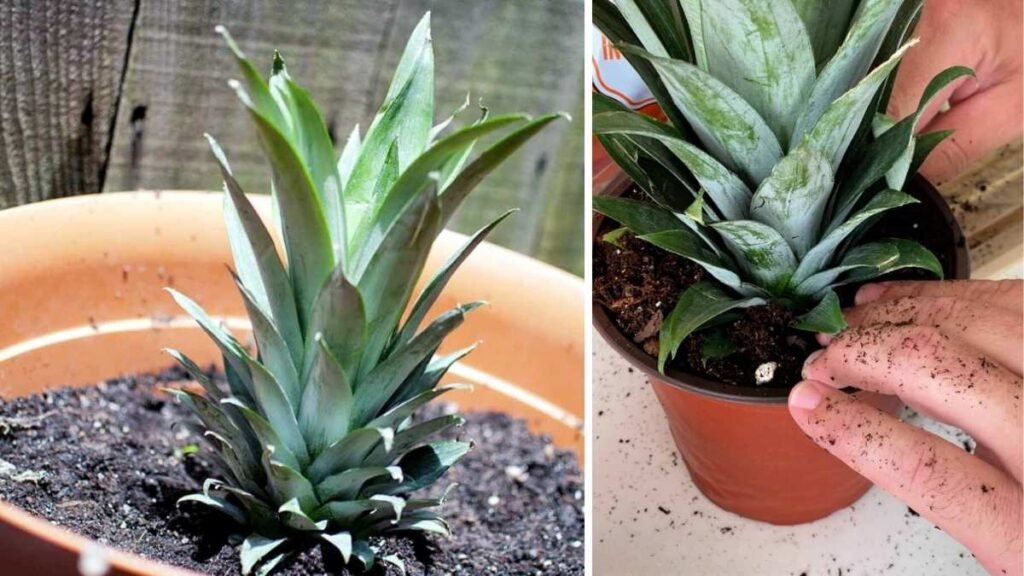
Dig a small hole in the center and place the rooted crown inside. Gently press the soil around it to keep it upright. Water the plant lightly after planting.
Place the pot in a warm, sunny spot where it can get at least six hours of sunlight each day. If you live in a cooler climate, a sunny window or a heated greenhouse is ideal.
Step 5: Care and Maintenance
Pineapple plants are low-maintenance, but they still need regular care.
Watering: Water the plant only when the top inch of soil feels dry. Be careful not to overwater, as pineapples hate soggy soil. In hot weather, you might need to water once or twice a week.
Light: Sunlight is important. If your plant doesn’t get enough light, it won’t grow well. Try to give it full sun whenever possible.
Feeding: You can feed your pineapple plant with a balanced liquid fertilizer once a month. Use it lightly too much fertilizer can harm the plant.
Temperature: Pineapples prefer warm temperatures. Keep your plant away from cold drafts or freezing weather. If you’re growing it outside, bring it indoors during winter.
Step 6: Watch It Grow
Pineapple plants grow slowly. In the first few months, the plant will focus on building strong roots and leaves. After about a year, you might notice a red cone forming in the center. This will turn into a flower, and later, into a small pineapple.
It can take between 18 and 24 months for your plant to produce fruit. It’s a slow process, but well worth the wait. As the fruit grows, it will change color and become heavier. When it smells sweet and turns golden, it’s ready to harvest.
Step 7: Harvest and Replant
When your pineapple is ripe, twist it gently to remove it from the plant. After harvesting, the main plant may produce small baby plants around its base. These are called pups and can be removed and planted to grow new pineapples.
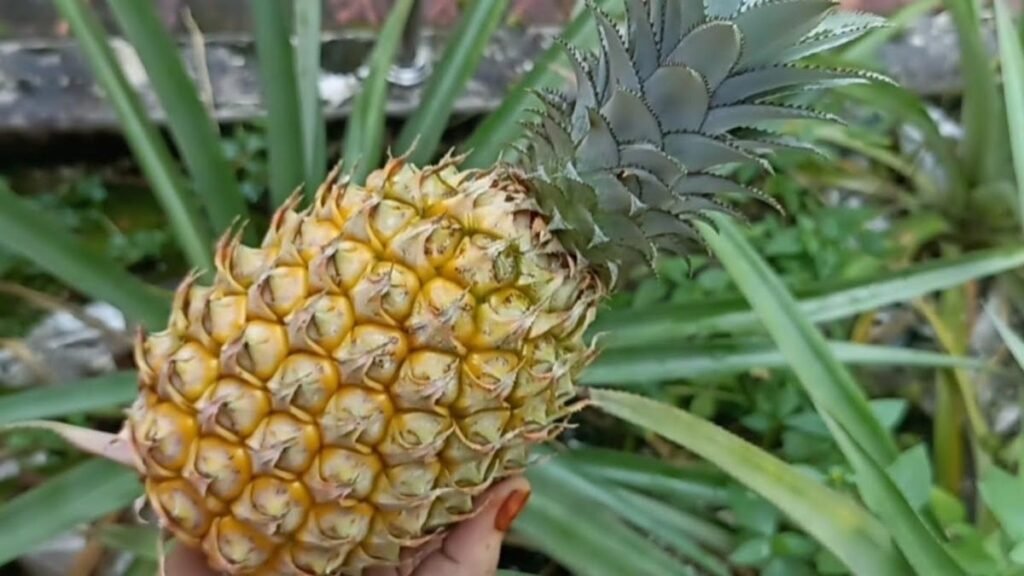
The original plant may not produce more fruit, but with the pups, you can start the process all over again with less waiting time.
Final Thoughts
Growing a pineapple at home is a fun and rewarding experience. It takes time and care, but the process is simple and enjoyable. Watching a plant grow from a grocery store fruit into a full pineapple is a satisfying journey. Even if you don’t live in a tropical climate, you can still enjoy fresh, homegrown pineapples with just a bit of space and sunlight.
So next time you buy a pineapple, don’t throw away the top plant it instead and start your own tropical garden at home.

